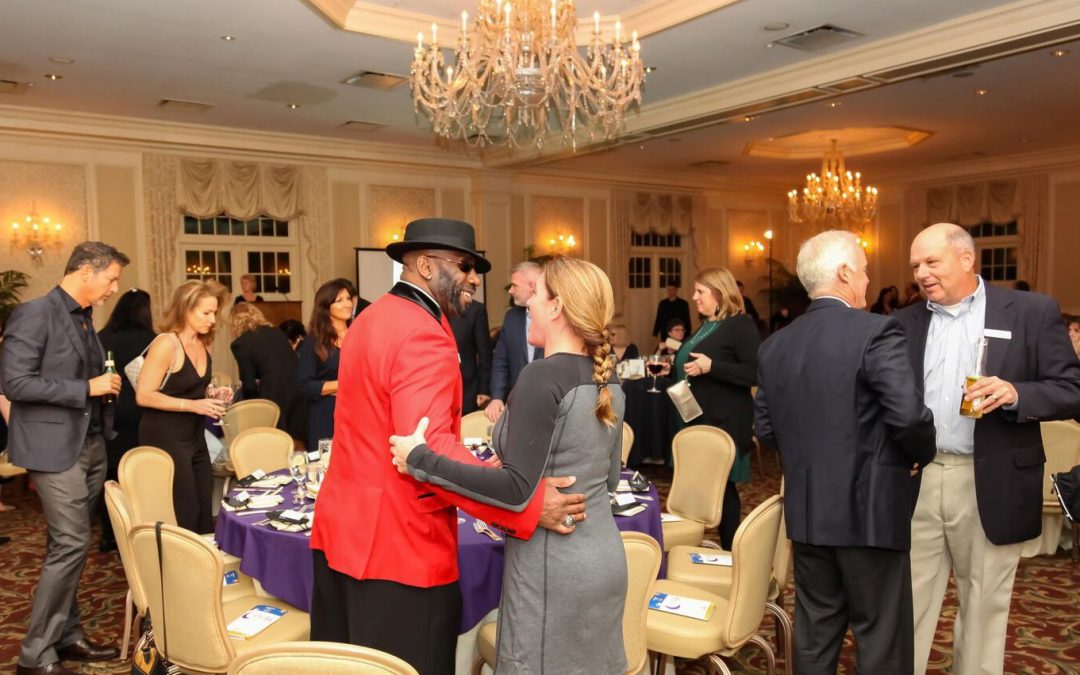
by admin | Jan 18, 2020 | Blog, News
How to be courteous in social settings with people who are blind or low vision?
Please talk to them directly, rather than to their companions, and talk like you would with other people.
It’s ok to still use words such as see and look. People who are blind/low vision will talk with you like everyone else, although they may not be able to make direct eye contact.
Losing some or all of your eye sight takes some adjusting to. Find out how we can help by reaching out to our program director, Linda Groszew by calling 973-627-0055 ext. 1312.
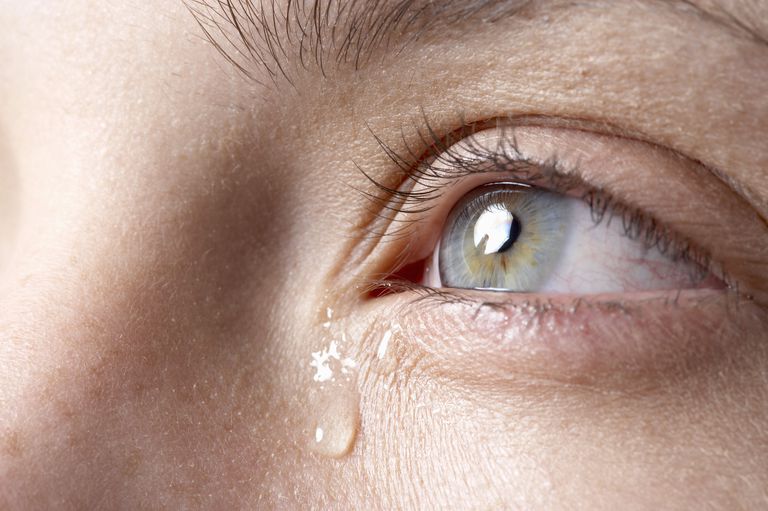
by admin | Jan 17, 2020 | Blog, News
Eye Facts! 👁️👁️
Did you know eyes can’t start producing tears till they are 4 to 13 weeks old?
💧 Tears are produced in the lacrimal glands (tear ducts) that are in the outer corners of your eyelids. These glands produce tears from your blood plasma, selecting some components but not others.
💧 They play an important role in keeping us healthy. Tears keep the surface of our eyeballs clean and moist and help protect our eyes from damage.
Interesting stuff!
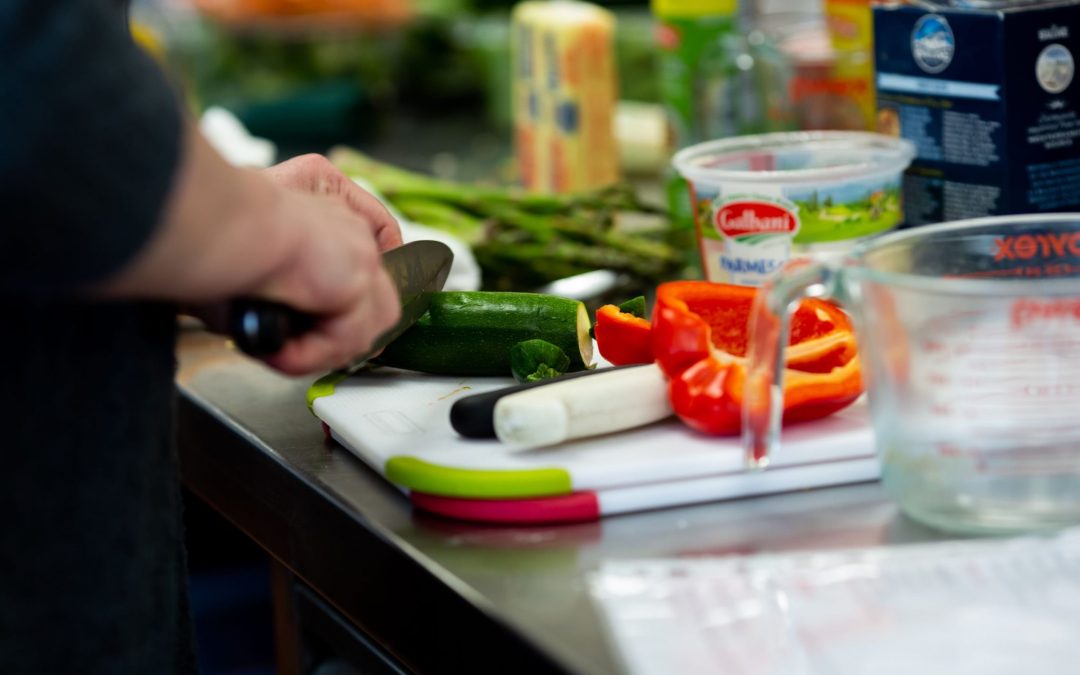
by admin | Jan 16, 2020 | Uncategorized
The winter session of our Health and Wellness Program started today!
Healthy Options is a class in the Program that teaches students how to prepare creative snacks, easy meals, and healthy desserts, using whole, natural foods while learning about the health benefits they provide.
One of our favorite recipes from class? Sweet Potato Shephard’s Pie!
Prep Time: 30 min
Cook Time: 30 min
Total Time: 1 hr
Difficulty: Easy
Servings: 4
INGREDIENTS: 2 large sweet potatoes; 1 tablespoon olive oil; 1 small onion, diced; 1 red pepper, diced; 2 cloves garlic, minced; 1 1/4 lbs lean ground turkey; 1 can 14.5 ounce, diced tomatoes; 1 tablespoon dijon or spicy brown mustard; 1 tablespoon Worcestershire sauce; 1 teaspoon dried thyme; 1 teaspoon black pepper; 2 teaspoons corn starch; ¼ cup cold chicken stock, wine or water; 2 tablespoons melted butter; ¼ cup yogurt; ½ teaspoon cumin powder; ½ teaspoon coriander powder; Grating of nutmeg; ½ teaspoon hot sauce; ¼ cup grated Cotija Cheese or Parmesan Cheese; salt and pepper to taste
EQUIPMENT:
Sauté pans; Knives; Chopper box; Measuring cups & spoons; Bowls; Spatulas/wooden spoons; Potato masher; Baking dishes; Microwave; Oven
DIRECTIONS:
Scrub and pierce sweet potato; place on a microwave-safe plate. Microwave, uncovered, on high for 20 minutes or until tender.
While potatoes are cooking. Heat oil and sauté onions and peppers over medium-high heat for 3 minutes. Add garlic and thyme and sauté for 30 seconds. Add turkey and cook until brown, about 6-7 minutes.
Add diced tomatoes, mustard, Worcestershire sauce, black pepper and salt. Bring to a simmer.
In a small bowl, mix together corn starch and cold stock. Add to turkey mixture and stir. Let simmer for 5 more minutes.
Peel and break up sweet potatoes with your hands. Place them in a medium bowl add melted butter, yogurt, cumin, coriander, nutmeg, hot sauce and cheese. Mash with a potato masher until well combined.
Pour cooked turkey mixture evenly into a greased medium-sized baking dish. Spread sweet potatoes evenly on top of turkey mixture.
Bake at 350°F for 30 minutes.
NUTRITION
8 Servings; Serving Size 1/8 of recipe; Calories 235; Total Fat 9g; Saturated Fat 2g; Cholesterol 55mg; Sodium 250mg; Total Carbohydrate 23g; Dietary Fiber 4g; Total Sugars 8g; Protein 17g; Potassium 550mg
Click the image for a printable version of the recipe:


by admin | Jan 16, 2020 | Blog, News
Tinting your eyelashes, micro-blading your eyebrows… with all these enhancements available to the general public, what are the actual risks?
Enhancing your eyelashes and eyebrows via tinting or adding extensions could cause problems with the eyes and affect vision, as they all take place so close to the eyes. Repeated exposures to chemicals in dies and glues could cause sensitivities. Accidental slip-ups can cause permanent corneal damage and more.
The Food and Drug Administration has not approved any color additives for permanent dyeing or tinting of eyelashes and eyebrows. The agency says permanent eyelash and eyebrow tints and dyes have been known to cause serious eye injuries, including blindness. Despite issuing warnings, the FDA cannot regulate salons. That job falls to state and local governments, which can have different rules.
Know the risks before booking that beauty appointment!
by admin | Jan 14, 2020 | Blog, News
Happy Tech Tuesday! The winter session of our Technology Program starts today! 📱
Cellphones and iPads have made life easier with their new features like email, planners, social media, navigation systems, weather, and so forth…
Although most apps and features are not geared toward people who are blind or have low vision, there are many meant for just them – all of which this program teaches to the participants!
Did you know you can use your phone to program household electronics, vacuums, thermostats, and lights, just to name a few useful features? Pretty cool stuff!
If you’d like to find out more about our Technology Program, please email Linda Groszew, the Program Director, at 📧 lgroszew@vlanj.org, or call us at ☎️ 973-627-0055 ext 1312.
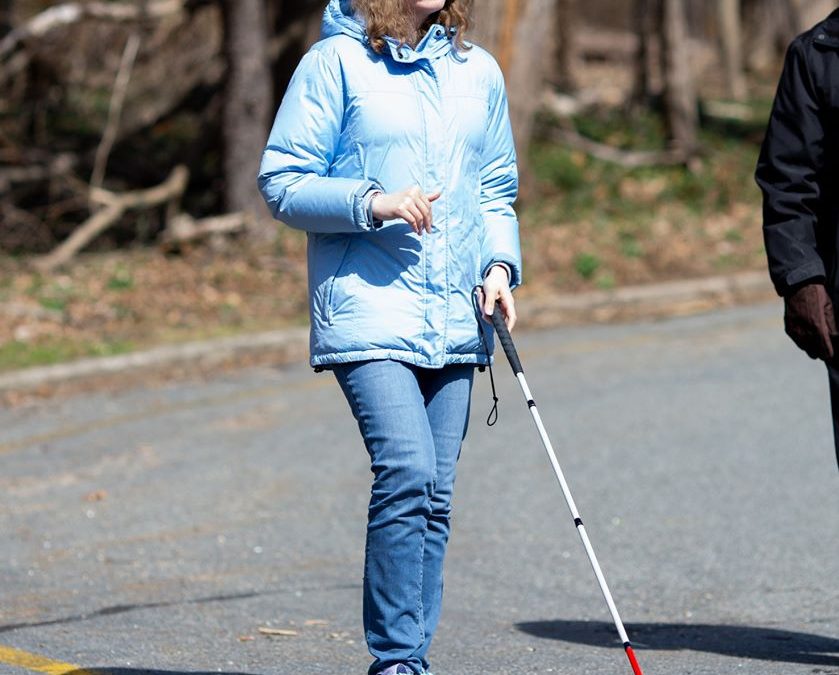
by admin | Jan 13, 2020 | Blog, News
In all 50 states, the law requires drivers to yield the right of way when they see an extended white cane or guide dog.
Only people who are blind or have low vision may legally carry white canes. They listen to traffic patterns to know when to cross streets and to keep a straight line when moving around.
So remember to yield the right of way!
by admin | Jan 12, 2020 | Blog, News
😎 ☀️ Gorgeous weather calls for digging out your sunglasses! ☀️😎
You should, however, keep them out for the rest of winter too. Studies show that sun exposure — regardless of season — may increase the risk of developing cataracts, snow blindness and growths on the eye, including cancer. Find out more in the article below!
https://www.aao.org/eye-health/tips-prevention/winter-sun-eye-safety?fbclid=IwAR2whWZNJ9vHBYi_T3on4GjWZI-XiUi4n4ON1nZHOcIPIumnnd88Kfr3flc
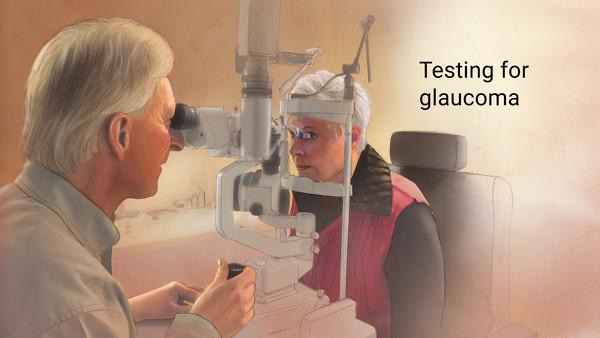
by admin | Jan 10, 2020 | Blog, News
Glaucoma is often referred to as the silent thief of eye sight. 👁️👁️
The signs and symptoms of glaucoma vary depending on the type and stage of your condition. If left untreated, glaucoma will eventually cause blindness. Even with treatment, about 15 percent of people with glaucoma become blind in at least one eye within 20 years.
Symptoms of acute angle-closure glaucoma include:
• Severe headache
• Eye pain
• Nausea and vomiting
• Blurred vision
• Halos around lights
• Eye redness
Symptoms of open-angle glaucoma include patchy blind spots in your side (peripheral) or central vision, frequently in both eyes, and tunnel vision in the advanced stages.
If you’re experiencing some of the symptoms of acute angle-closure glaucoma, such as severe headache, eye pain and blurred vision, head to the emergency room or see your eye doctor immediately!
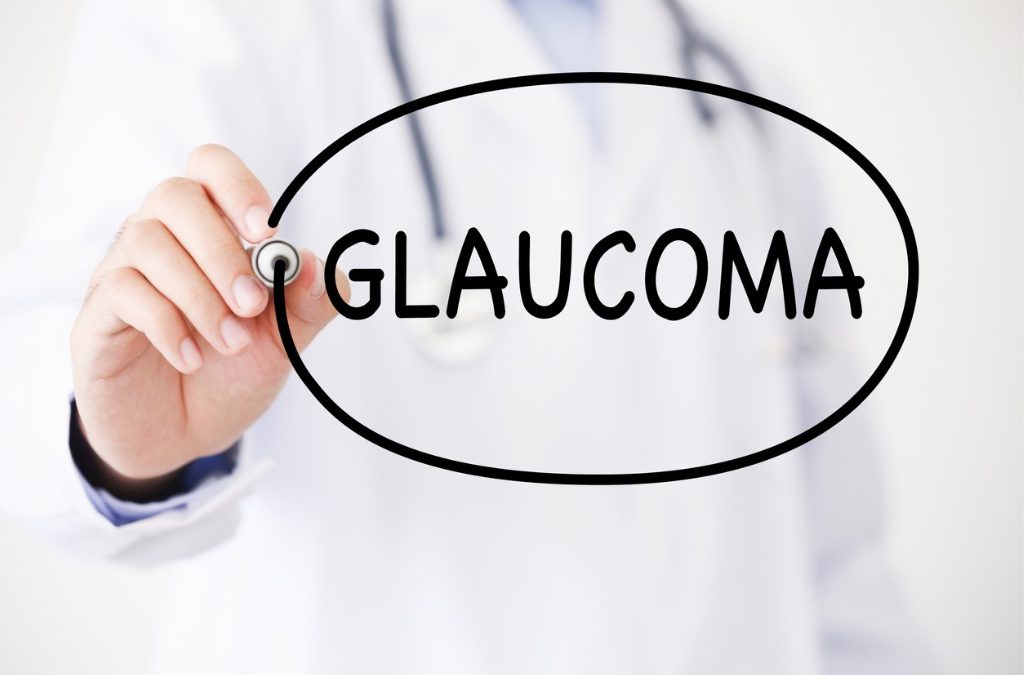
by admin | Jan 9, 2020 | Blog, News
Glaucoma is one of the leading causes of vision loss and blindness. Known as the silent thief of eye sight, glaucoma often progresses with no symptoms or warning signs, making it crucial to detect it early. Although more common in people over 60, glaucoma can affect people of any age.
How does glaucoma progress?
Your eye is filled with a clear fluid which your body is continuously replacing. More fluid enters the eye in the back and the excess fluid drains through the front. As you age, the “drains” for the fluid become narrow and the eye cannot drain the excess fluid quickly enough. This fluid builds up and pressure increases in the eye. If the pressure gets high enough, it can damage the optic nerve because the pressure restricts the flow of blood to the nerve, causing vision loss and even blindness.
Vision loss due to glaucoma can’t be recovered. So it’s important to have regular eye exams that include measurements of your eye pressure. If glaucoma is recognized early, vision loss can be slowed or prevented!
by admin | Jan 6, 2020 | Blog, News
New year, new healthy you. If a doctor’s visit and medical testing are part of your start-of-the-year goals, click the link below to find out what the numbers behind the tests really mean.
https://www.washingtonpost.com/health/how-to-interpret-your-medical-tests-numbers/2019/12/06/7cc496be-07d0-11ea-8ac0-0810ed197c7e_story.html?fbclid=IwAR2Pfq_U6KqNuZJu1xuWURZ3p1U_4HT1Xh9afQZ32_5CRRg7C9WiWoVAeww
What numbers should you look out for with your eyes? 👀
If your vision has worsened with age, you should still expect to see close to 20/20 with contact lenses or glasses. Another key vision number: eye pressure, which can indicate glaucoma if it is high.
Normal pressure is less than 21 mmHg. But being in that range doesn’t guarantee that you’re in the clear, says Andrew Iwach, executive director of the Glaucoma Center of San Francisco and a spokesman for the American Academy of Ophthalmology. To rule out glaucoma, your doctor will also need to measure your cornea’s thickness and examine your optic nerve.
What to do: The American Academy of Ophthalmology recommends that healthy adults have a comprehensive eye exam with an ophthalmologist by age 40. If you’re experiencing vision changes or problems, make an appointment with one immediately. If you’re 65 or older, see an ophthalmologist every year or two to be evaluated for eye diseases such as age-related macular degeneration, cataracts and glaucoma.
Keep your eyes safe – not all vision is 2020. 👓
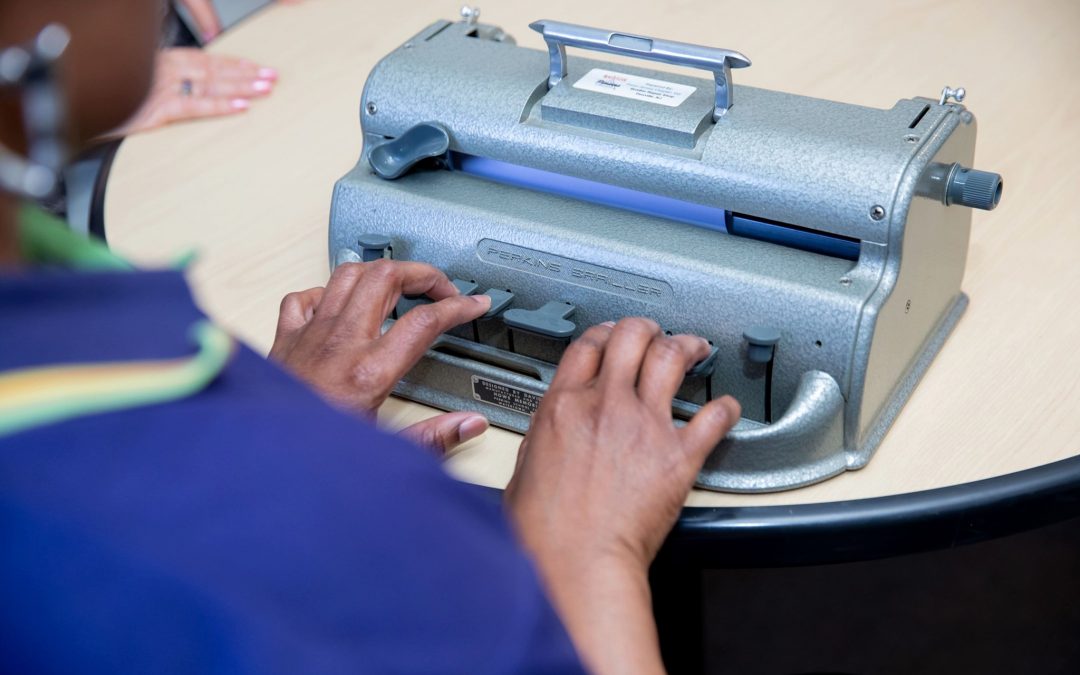
by admin | Jan 5, 2020 | Blog, News
Yesterday we celebrated World Braille Day. Most people know Braille as the “language for blind people,” but what is it really? 👀
Braille is actually not a language but rather a code by which all languages may be written and read – in a nutshell, it’s a tactile reading and writing system that uses raised dots to represent the letters of the print alphabet. It also includes symbols to represent punctuation, mathematics and scientific characters, music, computer notation and foreign languages.
Through the use of Braille, people who are blind are able to review and study the written word. It provides a vehicle for literacy and gives an individual the ability to become familiar with spelling, punctuation, paragraphing and other formatting considerations.
What does it look like?
Braille symbols are formed within units of space known as braille cells. A full braille cell consists of six raised dots arranged in two parallel vertical columns of three dots (like the number 6 on a dice). The dot positions are identified by numbers one through to six. 63 combinations are possible using one or more of these six dots. Cells can be used to represent a letter of the alphabet, number, punctuation, part of a word or even a whole word.
Want to learn Braille? Send us an email at lgroszew@vlanj.org or call us at 973-627-0055 ext. 1312 to join our programs!
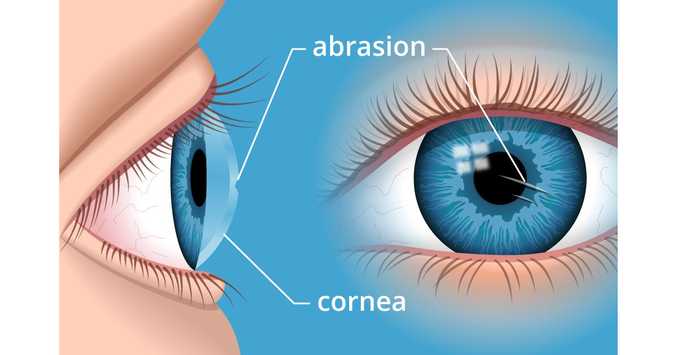
by admin | Dec 31, 2019 | Blog, News
Eye facts! 👀
Eye injuries are very common at the start of the new year, as people are changing their routines. A corneal abrasion (scratched cornea or scratched eye) is one of the most common eye injuries.
Did you know a corneal scratch can heal in only 48 hours, making the eye one of the fastest healing organs in the body?
That amazing tidbit aside, here’s what you should do when you scratch your eye:
• Avoid rubbing your eyes – that can make the scratch worse.
• Rinse your eye with a sterile saline eye wash or a multipurpose contact lens solution. Try to avoid rinsing with tap water or bottled water, as they can contain pathogens that can cause a serious, vision-threatening infection if introduced to an eye with a scratched cornea.
• Don’t patch the eye, since this can speed bacterial growth and increase the risk of an eye infection.
• Stick to glasses, rather than contacts. Contact lenses can increase risk of an infection developing under the lens.
• After flushing the eye, if redness, pain or foreign body sensation continues, seek immediate medical attention because corneal abrasions can cause serious harm within hours.
by admin | Dec 29, 2019 | Blog, News
On the topic of eye exams… should you do an at-home vision test via smartphone, rather than seeing your ophthalmologist?
On one hand, it’s more cost effective.. on the other hand, is it comprehensive enough?
Follow the link below for all the pro’s and cons.
https://abcnews.go.com/Technology/vision-tests-smartphones/story?id=67776823&fbclid=IwAR2GJPgWmS2_rBMn-nqdoYUKjvA3kR9EGnP3MEKt_Lv6ZXP4ejCwCdu8tx0

by admin | Dec 29, 2019 | Blog, News
As the new year approaches, health and wellness are shifting back into focus. Getting a comprehensive eye exam should be on everyone’s agenda, to ensure your vision is well cared for and to detect any diseases that could lead to vision loss or blindness.
Eye exams are important for people who are blind or have low vision as well – without sight, eye scratches and minor infections can easily go unnoticed, yet both can lead to very serious illnesses.
Moreover, many people first learn they have serious health conditions such as diabetes, high blood pressure, high cholesterol and even cancer from — yes, you guessed it — a routine eye exam.
Put vision in focus for 2020 and make sure to go see an ophthalmologist in the new year!
by admin | Dec 25, 2019 | Blog, News

On behalf of everyone at Vision Loss Alliance of New Jersey, we wish you Happy Hanukkah, Merry Christmas and Joyous Kwanzaa! May your holidays be peaceful and filled with laughter and joy.
Image description: The words “HAPPY Holidays” are written in black ink on a grey wood background. There are evergreens and red/green holly on the left side on the image. The Vision Loss Alliance logo overlays the evergreens in the bottom left corner.

by admin | Dec 23, 2019 | Blog, News
“I want an official Red Ryder, carbine action, two-hundred shot range model air rifle!”
“No, you’ll shoot your eye out.”
Although this line from “A Christmas Story” is funny in the movie, it’s nothing to laugh about in the real world, as the risk of eye injuries increases during the holidays.
Here are some general safety tips to make sure you don’t have to take an emergency trip to see your ophthalmologist:
• Decorating – pointy lights, glass ornaments, and sharp needles all pose significant eye injury risk. Moreover, if you are spraying anything like artificial snow be sure to keep those chemicals out of your eyes.
• Christmas Tree🎄– wear eye protection if cutting down or trimming your own tree. Use caution when mounting it on your car, and while setting up as well. It’s easy to be poked in the eye with branches when tree wrapping is released, or when working on securing the tree.
• Popping the bubbly 🍾 – New Year’s celebrations and champagne go hand in hand, but so do champagne bottle corks and eye injuries. This year, uncork that bottle of champagne with a hand towel over it to ensure the cork doesn’t fly. While not as flashy as a cork flying across the room, sending a party guest to the emergency room isn’t exactly a positive party memory.
• Toys and other gifts 🎁 – Avoid purchasing toys with sharp, protruding or projectile parts. Before gifting a doll house or remote control car to little ones, be sure to unpack it and identify any sharp edges on the toy or its accessories.
• Mistletoe – It is is meant to be a surprise, but sometimes it’s a bit too much of one… right in the eye! Those on the shorter side are in luck, but all those tall guys and gals out there need to keep an eye out for that unexpected mistletoe.

by admin | Dec 22, 2019 | Blog, News
DYI gift idea! 🎁 Mallory Carr, a teacher for people with vision loss in California, came up with this crafty do-it-yourself idea for a Braille memory game.
How to:
Use cardboard, thick paper, cork board or otherwise sturdy material as your game board.
Create pairs of cards out of cardboard or thick paper, and use puff paint to write words or contractions in Braille on them. This is also a great way to start learning Braille for beginners, or can be made more difficult for advanced readers.
Use Velcro to keep the cards put on the board, and voila! You have an accessible gift to give this holiday season! 🌲
by admin | Dec 20, 2019 | Blog, News
🎁 Holiday gift idea! 🎁
It’s entertaining, it’s fun, it’s a great pastime. It’s a… video game?
Lost and Hound is a video game specifically designed to be accessible for people with vision loss. It looks like a regular game, but it can be completed successfully with using audio alone – as tracking dog Biscuit, the player follows an audio trail that reflects a dog’s powerful sense of hearing to complete a rescue mission.
Each level draws inspiration from real-life search and rescue dog situations, such as sniffing out survivors in rubble after earthquakes and in collapsed mines.
The developer says players who are blind or have low vision tend to be better at the game than sighted players, because those with sight don’t use sound to inform their decisions – for them it’s more reactionary.
Would you play this game? 🕹
Follow the link for more info: https://phys.org/news/2019-06-lost-hound-video-games-vision.html?fbclid=IwAR0brTeYYXuvo6jtof3phAxkhvqE3VaVE-SxdfAIV2JSnMdNKYaEXko5W4g
by admin | Dec 20, 2019 | Blog, News
Holiday parties coming up? If that means sparkly eyeshadow, faux lashes and lots of glitter, remember to take extra caution when applying makeup or other cosmetics around the eyes.
A couple helpful tips:
• Only use cosmetics that are designed for use around the eyes. Avoid products that contain untested or harsh chemicals.
• Be careful with metallic, glitter, sparkle powder or other makeup. Flakes can fall into the eye, get into the tear film and irritate your eyes.
•Never share eye makeup, even with family or close friends, to avoid eye infections.
Find out more about using cosmetics safely this holiday season here.
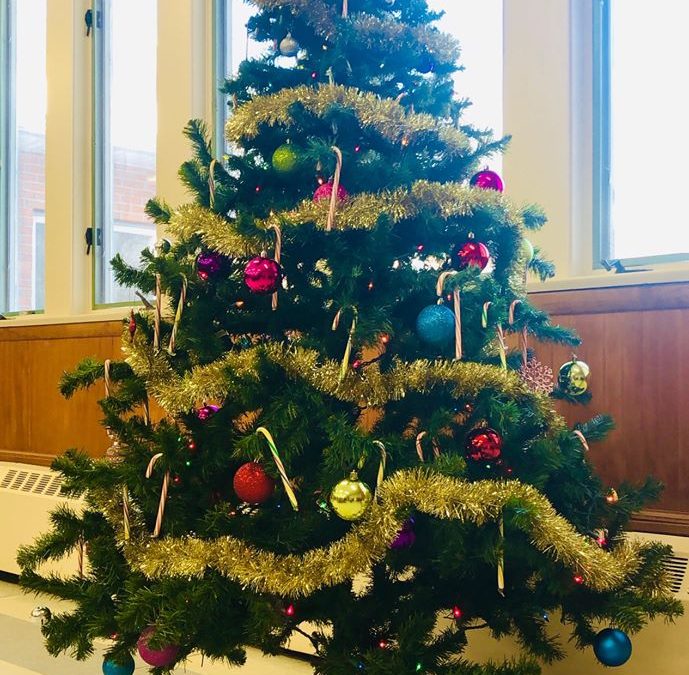
by admin | Dec 19, 2019 | Blog, News
🎄 Who would think the eye-catcher and focal point of the season, the Christmas tree, could be the very thing to cause you injury? 🎄
Christmas tree related eye injuries are very common! Here are some helpful tips:
• Wear eye-protective wear when cutting your tree.
• Hang glass ornaments out of reach for small children.
• Do not put gifts too far under the tree for small children.
• Be careful around the tree, especially when reaching for gifts to not be hit in the eye with a branch.















